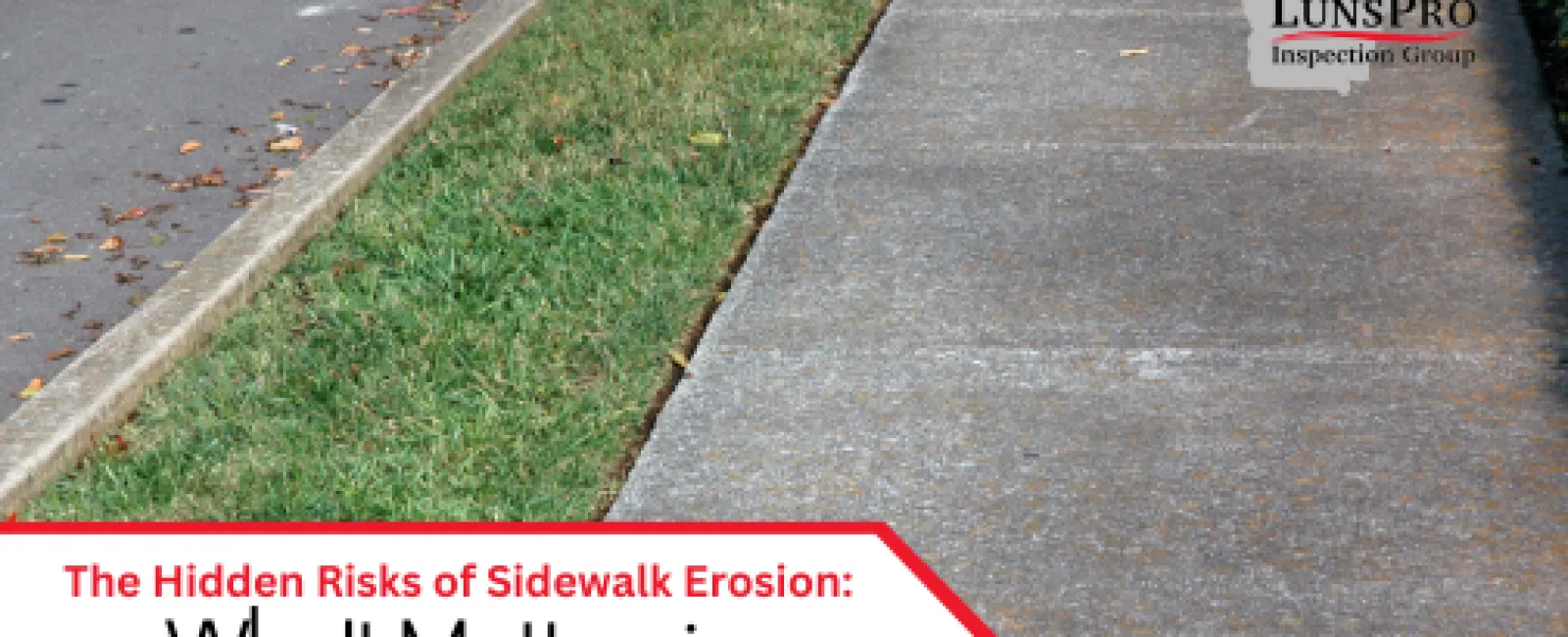When assessing a home's condition, it's easy to focus on the structure itself—roof, foundation, plumbing, and electrical systems. However, one often overlooked but crucial aspect of a property inspection is sidewalk erosion. Certified inspector Craig Bowers recently encountered a prime example of how sidewalk issues can lead to serious consequences for homeowners.
Why Sidewalks Matter More Than You Think
Sidewalks are more than just a pathway to and from your home; they play a significant role in safety, drainage, and overall property integrity. When sidewalks erode or shift, they create tripping hazards, lead to water drainage issues, and even contribute to foundation damage over time.
During a recent LunsPro home inspection, Craig Bowers discovered that poor grading around a home caused water runoff to pool around the sidewalk. Over time, this eroded the soil underneath, leading to an unstable surface and visible cracks. The grading issue not only compromised the sidewalk's integrity but also contributed to excessive moisture near the foundation—a risk factor for structural damage and mold growth.
Common Causes of Sidewalk Erosion
Several factors contribute to sidewalk erosion, including:
Improper grading - If a property isn't properly sloped, water can accumulate and wash away the soil underneath sidewalks.
Heavy rainfall - Excessive rainwater can erode the soil, particularly in areas with poor drainage.
Tree roots - Growing roots can shift sidewalks, causing them to crack and separate.
Freeze-thaw cycles - In colder climates, water seeps into cracks, freezes, and expands, making sidewalk damage worse.
The Safety and Liability Risks
Cracked and uneven sidewalks pose a significant tripping hazard, putting homeowners and visitors at risk of injury. In many areas, homeowners are responsible for maintaining sidewalks adjacent to their property. Neglecting these hazards could lead to costly repairs—or worse, legal liability if someone gets hurt.
Addressing Sidewalk Erosion: What Homeowners Can Do
If you notice signs of erosion around your home's sidewalks, consider these steps:
Improve Drainage - Ensure proper grading and install downspout extensions to direct water away from sidewalks and foundations.
Repair Cracks Promptly - Sealing cracks early prevents further damage from moisture intrusion.
Monitor Tree Roots - If tree roots are lifting the sidewalk, consult a professional to explore solutions like root barriers or alternative pavement materials.
Schedule Regular Inspections - A home inspection can identify erosion issues before they become major problems.
LunsPro Inspection Group: Protecting Your Investment
Sidewalk erosion is just one example of why professional home inspections are essential. At LunsPro Inspection Group, our certified inspectors thoroughly evaluate properties for both common and hidden issues that could impact safety and long-term maintenance costs.
Don't wait until small problems turn into major repairs. Whether you're buying, selling, or maintaining your home, our team is here to provide expert insight. Schedule your inspection today and ensure every part of your home—including sidewalks—is in top shape!

